This post may contain affiliate links. Please read our disclosure policy.
Pitting cherries might seem like one of those kitchen tasks that’s more trouble than it’s worth, but there’s something oddly satisfying about it. Whether you’re prepping a batch for a homemade cherry pie, tossing them into a cherry smoothie, or just snacking on them fresh, knowing how to remove pesky cherry pits can make all the difference. In this tutorial, I’ll show you 4 ways to pit cherries with whatever you have on hand!
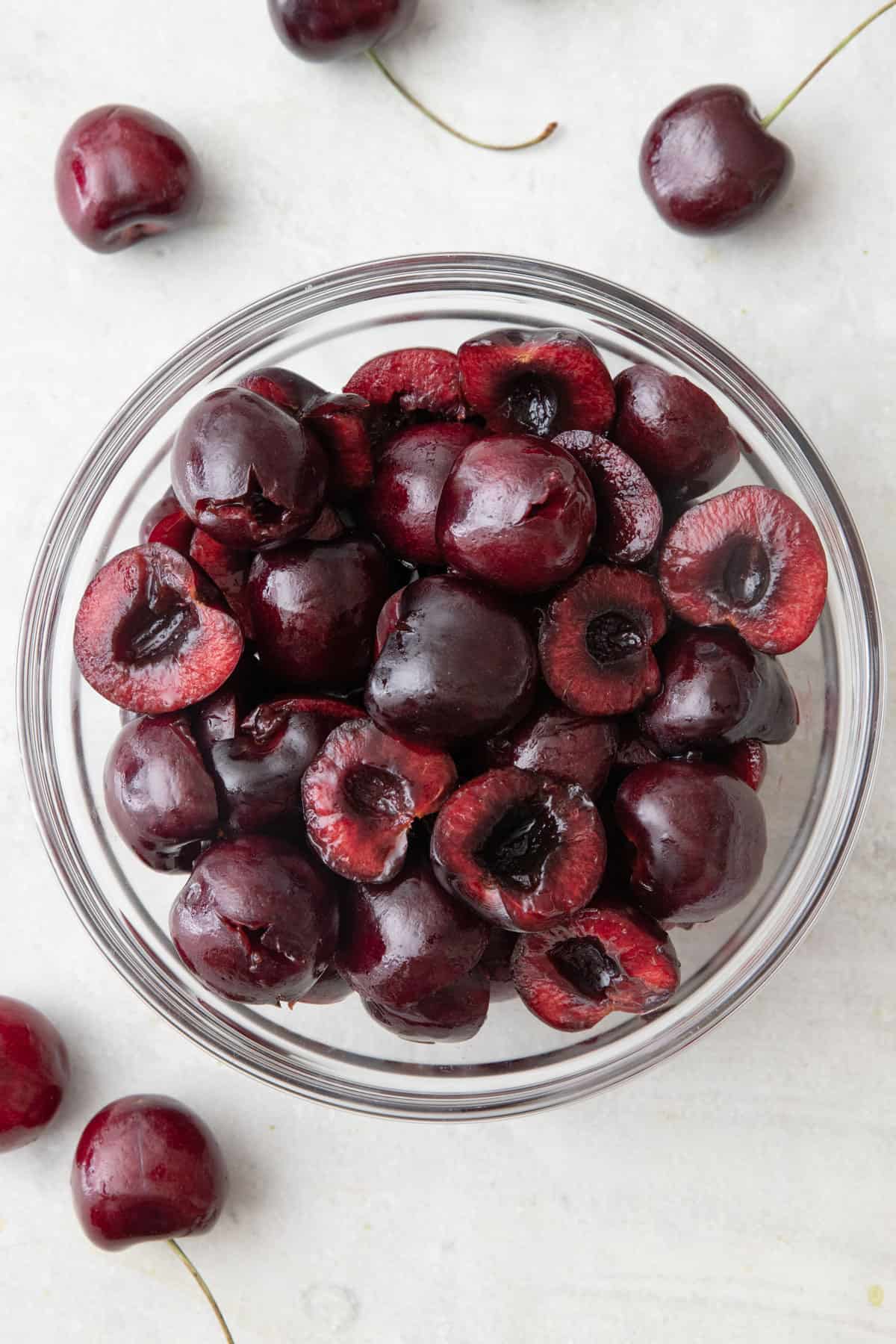
Jump to Section
No cherry pitter, no problem! You don’t actually need one to remove the pit. We’ve got the poke method for those who prefer using household items like a straw or chopstick, the slice and twist for a more hands-on approach, the tear method that’s as straightforward as it sounds, and the press method for when you’re in a hurry. Each pitting technique has its pros and cons, but they all share the goal of keeping your cherries looking as good as they taste (well, minus the press method).
Why Learn How to Pit Cherries Without a Cherry Pitter
- Minimal cleanup. Knowing how to pit cherries by hand is surprisingly less messy than using a cherry pitter. There’s no extra tools to wash, and the cherries actually come out cleaner too because you have more control over the process.
- Sheer convenience. You can pit as little or as many cherries as you need on the spot without having to search for any tools.
- Saves space in the kitchen. No need to clutter that tool drawer even more. Learning how to pit cherries at home using common kitchen tools you already have on hand makes your time in the kitchen more efficient.
What You’ll Need to Pit Cherries at Home
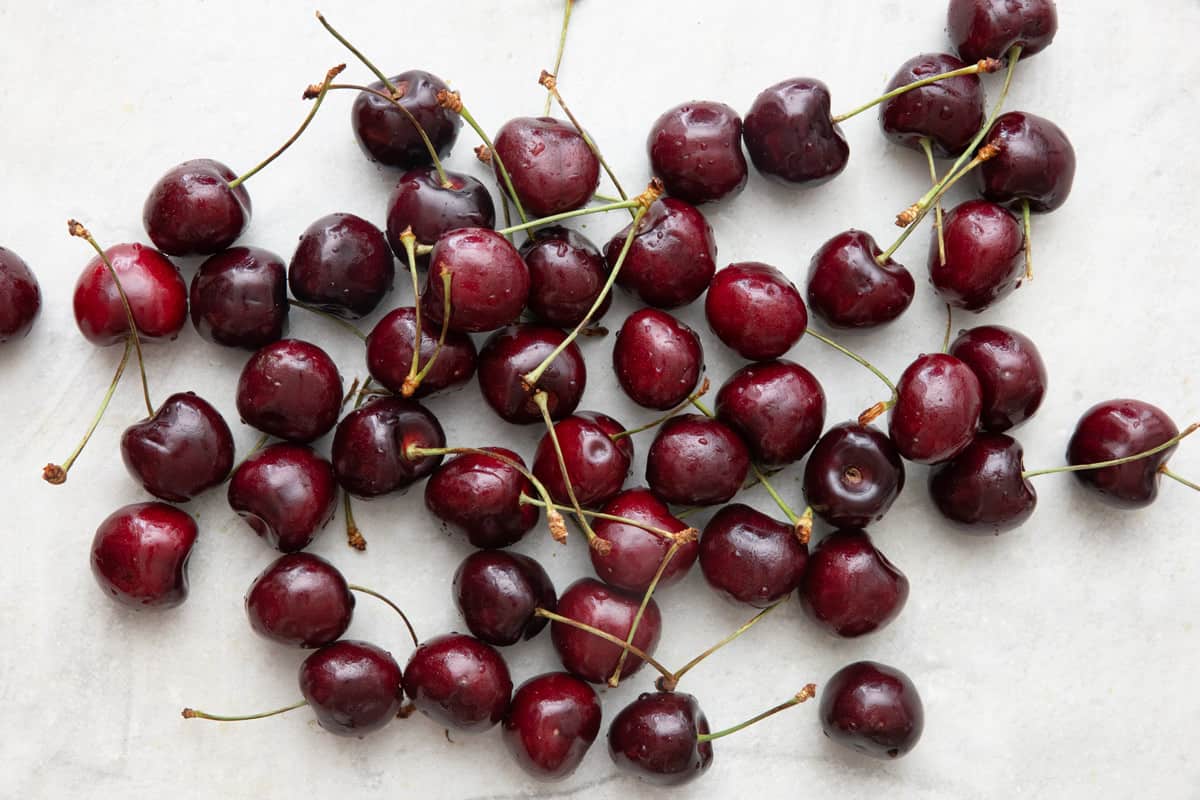
- Cherries: The best cherries to pit at home are round, perfectly ripe, and free from blemishes. Choose cherries with a firm texture, as they are easier to pit without crushing and hold their shape well.
- Knife: A sharp pairing knife works best here and helps keep the cherry looking nice.
- Straw or chopstick: If you’re going with the poke method, you’ll need something to help you push the pit through the other end of the cherry.
How to Pit Cherries – 4 Ways
If you love cherries as much as I do, you will love this quick tutorial. I show you how to pit cherries with a straw or chopstick, a paring knife, or your hands. These methods are tried and tested and offer an easier way to pit cherries without any trendy kitchen tools.
Poke Method
- Hold the cherry with the stem side facing up. Using your other hand, place a straw, chopstick, or thin pastry tip on the stem side.
- Firmly but carefully push through the tip straight down until the pit pops out from the bottom.
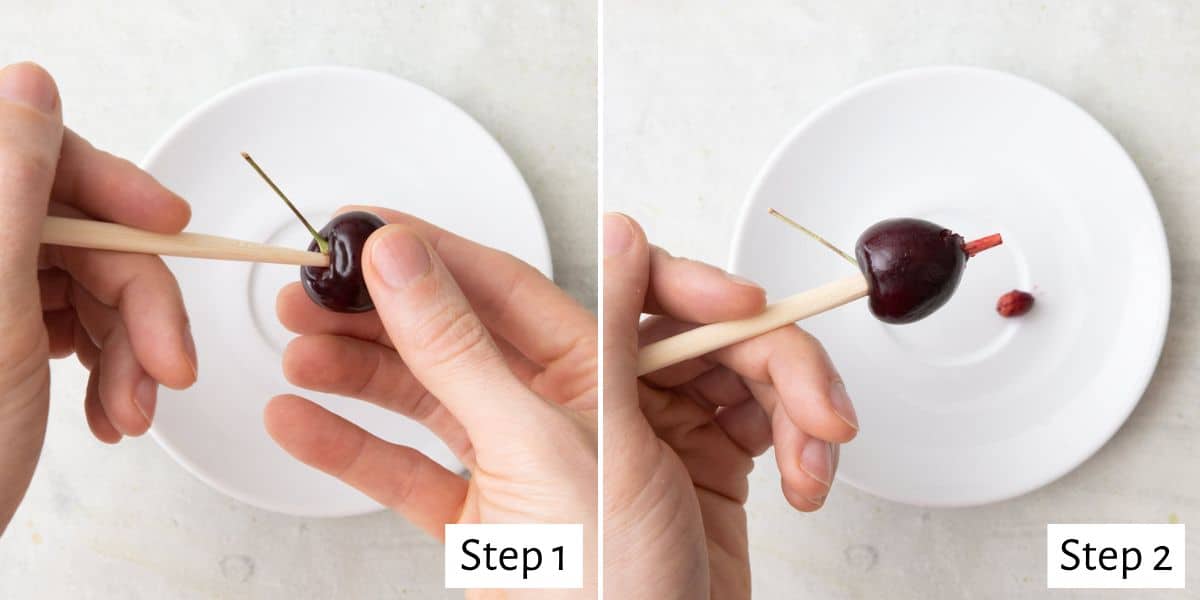
Slice and Twist Method
- Hold the cherry with the stem side facing up. Use a paring knife to cut around the cherry lengthwise, rotating the cherry as you cut around.
- Twist the two cut cherry halves, exposing the pit.
- Remove the pit with your fingers.
- Repeat with the remaining cherries.
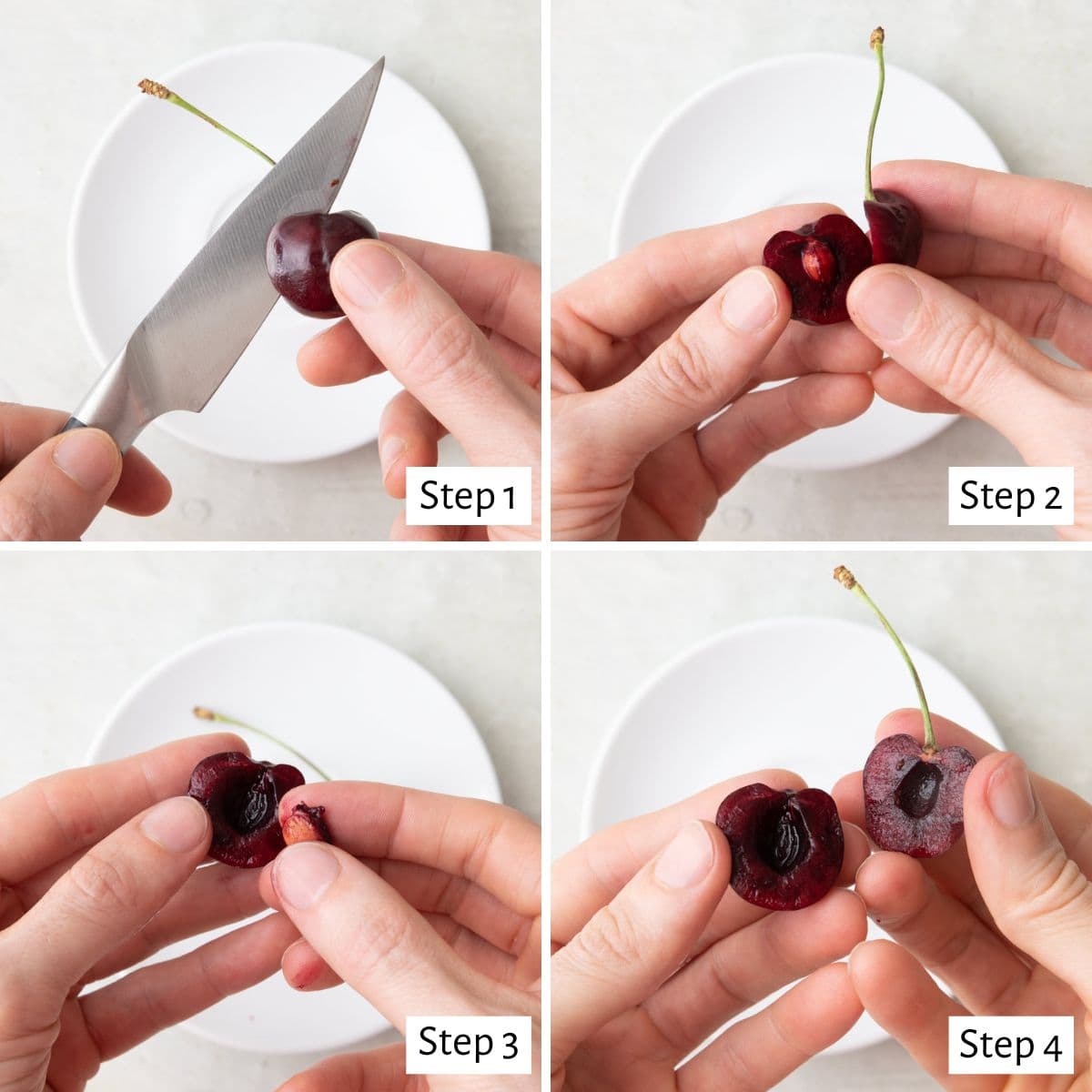
Tear Method
- Hold the cherry with the stem side facing up. Place your thumbs on the stem side and your index fingers on the opposite side. Firmly but carefully pull the cherry apart, ripping it in half.
- Remove the cherry pit with your fingers.
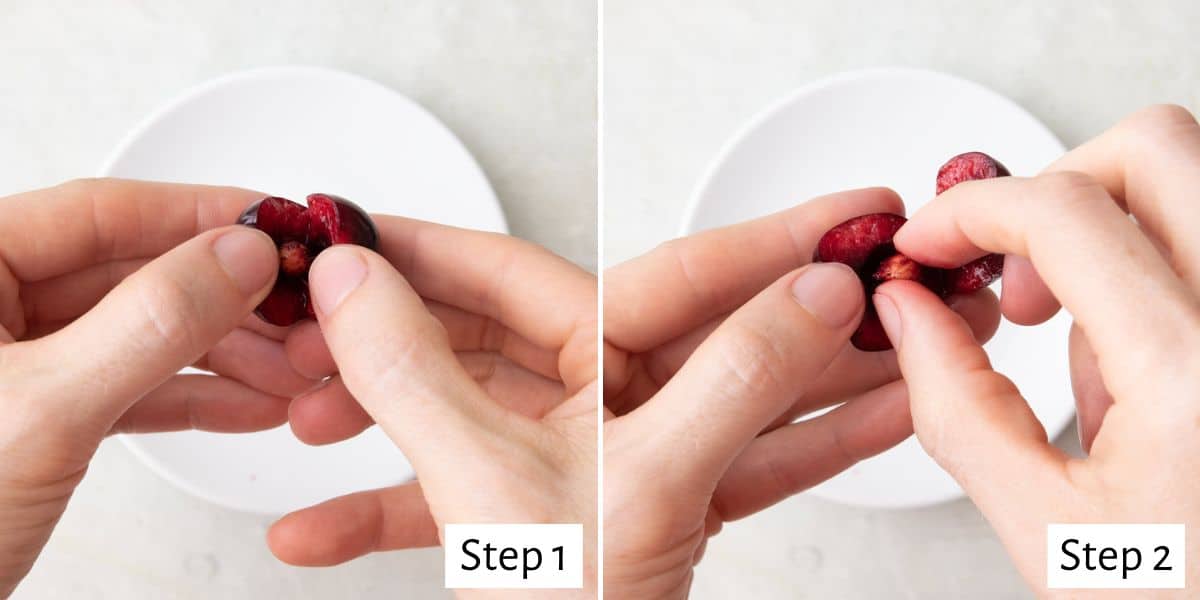
Press Method
- Place the cherry on a cutting board. Use the flat side of a paring knife to press down on the cherry firmly but carefully.
- This will loosen the pit and then you can remove it with your fingers.
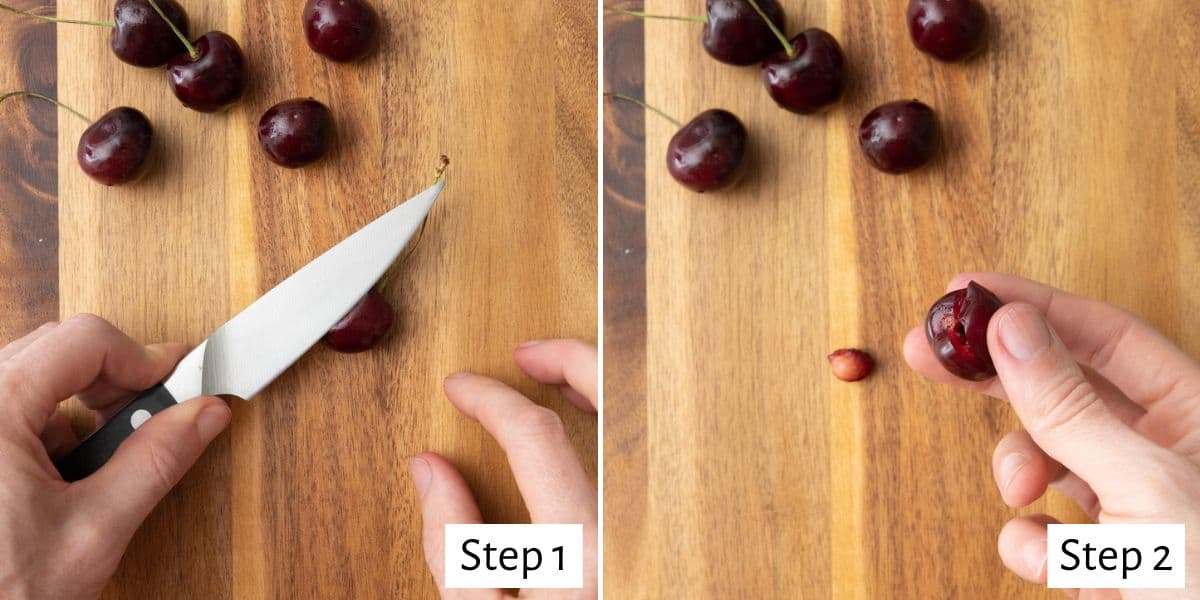
Tips for Pitting Cherries at Home
- Use a bottle. If using the poke method, consider placing the cherry on top of an empty but sturdy bottle with a narrow opening, instead of between your fingers. The pit will pop directly into the bottle.
- Chill cherries before pitting. Pop your cherries in the freezer for about 10 minutes before pitting them. This will firm them up slightly, making them easier to handle without squishing.
- Wear kitchen gloves. To prevent your hands from getting stained by cherry juice, wear disposable kitchen gloves.
- Keep the tools clean. If you’re pitting a large amount of cherries, keep a bowl of water or a damp cloth nearby to keep your straw, chopstick, or knife clean. This will help prevent cherry residue from building up.
Recipes to Make with Cherries
Frequently Asked Questions
Any variety of cherries will work, but sweet cherries like Bing, Ranier, or Black cherries are best for their large size. Tart cherries like Morellos tend to be a little softer than the sweet varieties so it may be a little tedious pitting them.
The good news is that it’s entirely possible to pit cherries without special tools. My favorite and least messy method is the poke method using a straw, chopstick, or pastry tip. But you can also pit cherries with a paring knife or tearing it open with your hands. Experiment with these techniques to find the best method for you.
Pitted cherries should be stored in an airtight container in the refrigerator for up to 4 days. You can also freeze them for future recipes. Simply spread the pitted cherries in a single layer on a baking sheet and freeze until firm. Once frozen, transfer them to a freezer-safe ziptop bag and freeze for up to 3 months.

Knowing how to pit cherries by hand without special tools is a valuable skill to have in your cooking. It opens up a world of delicious opportunities, allowing you to easily include fresh, seasonal cherries in your favorite recipes without relying on trendy kitchen gadgets.
More Fruit Tutorials:
- How to Cut a Watermelon
- How to Cut a Peach
- How to Cut a Kiwi
- How to Cut a Pomegranate
- How to Cut an Apple
- How to Cut Papaya
- How to Cut Dragon Fruit
If you found this tutorial for How to Pit Cherries helpful or if you try any recipe on Feel Good Foodie, then don’t forget to rate the recipe and leave a comment below! It helps others who are thinking of trying out this tutorial and we would love to hear about your experience. And if you snapped some shots, share it on Instagram so we can repost on Stories!

How to Pit Cherries
Ingredients
- 1 pound cherries stems removed
Instructions
Poke Method
- Hold the cherry with the stem side facing up. Place a straw, chopstick or thin pastry tip on the stem side. Firmly but carefully push through the tip straight down until the pit pops out from the bottom. You can also place the cherry on the top of an empty bottle with a narrow opening, instead of between your fingers.
Slice and Twist Method
- Hold the cherry with the stem side facing up. Use a paring knife to cut around the cherry lengthwise, rotating the cherry as you cut around. Twist the two cut cherry halves, then remove the pit with your fingers.
Tear Method
- Hold the cherry with the stem side facing up. Place your thumbs on the stem side and your index fingers on the opposite side. Firmly but carefully pull the cherry apart, ripping it half. Remove the pit with your fingers.
Press Method
- Place the cherry on a cutting board. Use the flat side of a paring knife to press down on the cherry firmly but carefully. This will loosen the pit and then you can remove the pit with your fingers.
Equipment
Notes
Nutrition
Nutrition information provided is an estimate. It will vary based on cooking method and specific ingredients used.






I used the straw method and it was easy peasy! I finally found a use for the metal straw that my friend gave me since I do not use straw in my drinks. Thank you for this hack!😊
Awesome! So happy it worked for you, Leah!